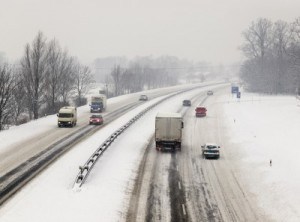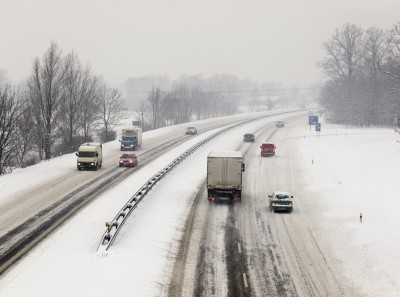 The holidays mean food, family, and friends for many it also means long trips through snow, sleet, ice, and fog. No matter how many years of driving experience you have under your belt, these conditions present a wide variety of challenges.
The holidays mean food, family, and friends for many it also means long trips through snow, sleet, ice, and fog. No matter how many years of driving experience you have under your belt, these conditions present a wide variety of challenges.
“Understanding how to drive safely in harsh weather conditions can protect you, your passengers and your vehicle,” said Bob Gallo, AARP Illinois State Director. “Like many Illinoisans, I will be traveling this holiday season as well – and I definitely plan to take a few moments to review these tips and hope others do as well so we can all arrive at our destinations safely.”
AARP offers the following tips for staying safe on winter roads:
- Winterize your vehicle to make sure your brakes, wipers, defroster, headlights and heater are all working properly.
- Stop gently to avoid skidding. If your wheels start to lock up, ease off the brake.
- Turn on your headlights to increase your visibility to other motorists, and keep your lights clean and free of ice or debris.
- In unfavorable driving conditions, reduce your speed and increase the distance between your car and the one in front of you. Remember that it takes more time to stop on icy roads.
- Stay alert. Look ahead to give yourself more time to react safely to situations without suddenly braking or skidding.
- Before driving, clear all snow and ice from your vehicle’s hood, windows and roof.
- Use snow or all-season tires or chains for better traction and smoother slowing. Remember that even with snow tires, you should use extra caution while driving in inclement weather — no tires allow you to drive on snow or ice at normal speeds.
- Take extra precautions on bridges, overpasses, and shaded areas, which can freeze first, and remain icy longer than roadways. A road on which ice and snow are completely frozen is pretty slippery, even though it provides more traction than a road with melting ice.
- In wet driving conditions, do not drive faster than the windshield wipers can clear water from the windshield. Make sure your wiper blades are in good shape, and replace them yearly.
- Equip your car with emergency supplies, such as blankets, food, water, spare fuses, a flashlight with batteries, an ice scraper, flares and a first-aid kit.
Driving to see family is the most economical option in most cases, but not if your vehicle is damaged due to bad driving conditions. Plan to stop every so often for breaks, take a hotel if you get tired and make sure you have your car tuned up before a trip that is 5 hours or more.


























